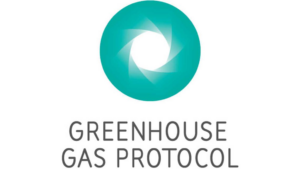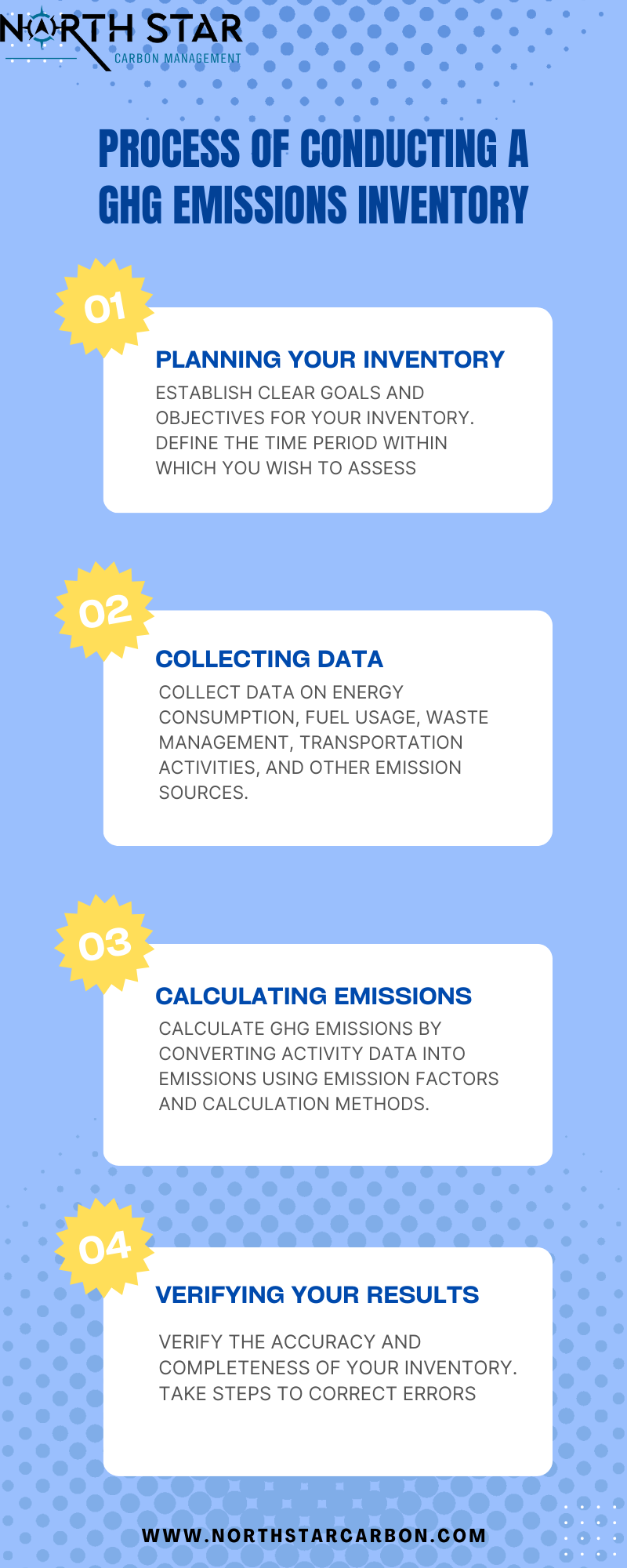
Contents
With over ten years of experience assisting organizations in their sustainability journey, I’ve witnessed firsthand the ascent of the Greenhouse Gas Protocol (GHGP) as the benchmark for emissions accounting. The GHG Protocol establishes thorough, globally defined frameworks for measuring and evaluating greenhouse gas (GHG) emissions from value chains, activities in the public and commercial sectors, and mitigation efforts.
Since its launch in 1998, the GHGP has become the most widely adopted framework across public and private sectors. Its practical frameworks for quantifying value chain emissions provide actionable carbon accounting methodologies trusted by sustainability teams worldwide.
The GHG Protocol provides businesses and other entities with thorough accounting tools to help them assess their carbon footprints and create efficient climate plans. Its evolution has helped drive the transparency and comparability essential for climate action. Think of the GHGP as the world’s carbon constitution – a rulebook for the sprawling, high-stakes emissions reduction race ahead. Do sustainability claims withstand scrutiny? What goes into a science-aligned target? Is progress measurable year over year?
Irrespective of a company’s sector, the GHG Protocol offers one universal GHG accounting standard. It makes decarbonization plans and progress more visible to decision-makers. This creates data-driven decisions around climate action. In this deep dive, we’ll discuss everything enterprises need to know to leverage this framework as a cornerstone in fighting climate change.

GHG Protocol Logo
The GHG Protocol guides emissions calculations, reporting, and climate change mitigation projects. Its Corporate Accounting and Reporting Standard, first published in 2001 and updated in 2004 and 2013, is widely used for company-wide carbon inventories. This standard helps organizations measure and manage their emissions effectively.

Globe Illustration
Precisely, it delivers consistent categorization across the significant classes of emissions sources relevant to corporations:
The GHG Protocol provides the framework for proper accounting techniques to quantify these three scopes. Once compiled, this holistic view of annual emissions in what’s referred to as a greenhouse gas (GHG) inventory, more commonly known as a Carbon Footprint. This helps companies to understand their carbon footprint-related activities across their value chain within a single year and year-over-year.
The GHG Protocol outlines five main concepts:
These principles collectively ensure that GHG emissions data is robust and provides a fair and accurate representation of a company’s GHG emissions impact.
During the industrial boom, environmental concerns became increasingly prominent. As global awareness about climate change grew, it became clear that a standardized method of environmental review was necessary.
To respond to this need, the World Resources Institute (WRI) and the World Business Council for Sustainable Development (WBCSD) began a collaboration with major companies, such as BP and General Motors. In 1998, they released a report titled “Safe Climate, Sound Business,” highlighting actions to tackle climate change, including the importance of standardizing how we measure GHG emissions.
The first version of the GHG Protocol, a set of tools to measure and report GHG emissions, came out in September 2001. It was a hit! Businesses, non-profits, and governments across the globe quickly adopted it. This tool has been crucial in helping organizations track and reduce emissions.
The GHG Protocol is constantly improving. Its standards and guidelines are updated through a unique decision-making process involving various groups referred to as the GPC Advisory Committee. These include an advisory group, technical working groups, a review group, a pilot testing group, and the secretariat. They all work together under the global reporting initiative to ensure the GHG Protocol stays relevant and effective in our fight against climate change.
The GHG Protocol strives to establish a consistent global system for measuring and reporting greenhouse gas (GHG) emissions. They have worked hard to ensure that all relevant sources of information are considered when developing such inventories and to establish trust-worthy standardizations that produce reliable results concerning levels of emission output from entities worldwide.
The GHG protocol is highly respected internationally due to its diligent efforts to impart invaluable knowledge of correctly calculating emissions data while helping to outline boundaries for effective, GHG accounting standards and procedures.
The Greenhouse Gas (GHG) Protocol provides the world’s most widely used greenhouse gas accounting standards. It provides a framework that enables organizations, governments, and other groups to quantify and disclose their greenhouse gas emissions in a manner that aligns with their objectives.
The GHG Protocol supplies various standards, including:
The GHGP also develops guidance to clarify how specific sectors can apply these standards. This includes guidance on Scope 2 emissions, Scope 3 emissions calculations, forestry, land, and agricultural (FLAG) based emissions, estimating and reporting avoided emissions, public sector emissions, potential emissions from fossil fuel reserves, and removals. These guidance documents help organizations measure GHG emissions for specific industries and situations.
Let us discuss some of these above-stated standards in detail.
The GHG Protocol Corporate Accounting and Reporting Standard provides requirements and guidance for organizations preparing a corporate-level GHG emissions inventory. The standard covers the accounting and reporting of seven greenhouse gases covered by the Kyoto Protocol –
The standard was designed with the following objectives in mind:
The standard was developed with the experience and knowledge of over 350 leading experts from businesses, NGOs, local governments, and accounting associations1. It has been road-tested by over 30 companies in 9 countries.
In 2016, 92% of Fortune 500 companies responding to the CDP stated that they used the GHGP directly or indirectly through a program based on the GHGP. This shows that the GHGP provides the global accounting platform for nearly every major corporate GHG reporting program.
Also referred to as the Product Standard, it provides requirements and guidance for companies and other organizations to quantify and publicly report an inventory of GHG emissions and removals associated with a specific product.
The Product Standard can be used to understand the full life cycle emissions of a product and focus efforts on the greatest GHG reduction opportunities. This includes emissions from raw materials, manufacturing, transportation, storage, use, and disposal. The results can create a competitive advantage by enabling better product design, increasing efficiencies, reducing costs, and removing risks.
The Product Standard was created through a broad, inclusive, multi-stakeholder process. Over a three-year period, 2,300 participants were involved from 55 countries, 112 members formed technical working groups to draft the standards, and 38 companies from various industries road-tested the standards in 2010.
The Project Accounting Protocol and Guidelines of the GHGP, also widely called the Project Protocol, provide specific principles, concepts, and methods for quantifying and reporting GHG reductions. These reductions refer to decreased GHG emissions or increased removals and storage from climate change mitigation projects.
While it was explicitly written for project developers, it can also interest administrators or designers of initiatives, systems, and programs that incorporate GHG projects and third-party verifiers for such projects.
The Project Protocol was developed through a unique four-year dialogue and consultation with business, environmental, and government experts led by WRI and WBCSD. More than 20 developers of GHG projects from 10 countries “road-tested” a prototype version, and more than 100 experts reviewed it.
The GHG Protocol Calculation Tools are designed to assist companies and cities in developing comprehensive and reliable inventories of their GHG emissions. They also assist towns and countries in tracking progress toward their climate goals. The tools reflect best-practice methods that industry experts have extensively tested.
The calculation tools are categorized into several types:
Each tool is accompanied by a PDF guidance document, which provides step-by-step guidance on using a tool. Most companies must apply more than one tool to cover their emissions.
The GHG Protocol is a practical directive that gives businesses the resources to face their greenhouse gas emissions. This foundational methodology is the basis for several vital applications- assessing organizational GHG inventories, finding emission reduction targets and prospects, setting scientifically founded targets and disclosing climate information for procurement or investment deliberations.
Organizations must comprehend how the GHGP works to gain a complete understanding of their GHG footprint. By following consistent reporting criteria, companies and organizations that manage emissions of all types can unlock the GHGP’s full potential toward sustainability purposes like the following.
Creating a company’s greenhouse gas inventory can seem like an intimidating undertaking, much like trying to decipher complex equations. The GHG Protocol simplifies the process by providing clear instructions – similar to having a reliable cookbook. It helps organizations move through each step of calculating their emissions quickly and confidently – from defining boundaries to data collection to emission calculations. With this protocol, tackling what seemed initially challenging is achievable simply by following its well-structured directions.
To understand the complete process of conducting a GHG emissions inventory, refer to North Star Carbon Management’s article – Conducting your first GHG emissions inventory.

Steps for Conducting a GHG Emissions Inventory with North Star Carbon Management
The GHG Protocol acts as a guide for businesses to find chances of cutting down their emissions through greenhouse gas reductions. It gives the direction they need, demonstrating where the highest levels of carbon dioxide and other greenhouse gasses are coming from, then proposes specific tactics that can be employed to lessen them. With help from the GHG Protocol, organizations may locate emission reduction possibilities that would have otherwise remained hidden.
The GHG Protocol gives companies the resources and instruction to reach their sustainability ambitions. It offers them a structure for establishing objectives based on science, working out approaches with net-zero impact in mind, and calculating current emissions levels; all while maintaining challenging but attainable targets and monitoring progress over time. By employing this guidance from the GHGP, businesses can ensure they stay on track when it comes to achieving these goals relating to reducing greenhouse gas (GHG) emissions output.
The core principles and wide adoption of the GHGP position it as the perfect foundational methodology to communicate climate data in an easily understandable format. Companies that follow the GHGP can then confidently make disclosures to CDP, regulators, investors, and other frameworks for greater accuracy and transparency.
In turn, stakeholders have access to easily comparable GHG information and can make informed decisions. The standardized language of the GHGP helps build trust while promoting sustainable practices.
The GHGP is a reliable guide for how to manage GHG information throughout procurement, assets investment, and mergers & acquisitions. It gives organizations an organized system for calculating and publishing greenhouse gas emissions to assess the environmental impact of their various supply chain, chains, investment decisions, or possible purchases.
The GHGP is not just limited to businesses – it also presents an opportunity for professionals such as consultants and other experts to offer enhanced services.
Value-added offerings can include:
At the same time, the GHGP provides valuable resources that specialists can take advantage of when providing advice or professional consultancy. It allows users access to best practices from around the world that enables them to effectively address their client’s needs regarding sustainability issues about greenhouse gas emissions.
Utilizing the data provided by the GHGP opens up numerous possibilities, both economically and in ecologically oriented development that involves collaboration between stakeholders – professionals, consultants, and end customers alike. For this reason, many industries have been advocating its adoption to benefit from the advantages of these groundbreaking concepts.
The GHG Protocol provides consultants with the essential methods and tools to provide high-quality guidance on measuring, calculating, and planning greenhouse gas emissions reduction goals. Adopting this international standard allows specialists to accurately assess a company’s emission levels, layout achievable objectives, and monitor progress.
The GHGP provides product design and development professionals with a comprehensive framework to build carbon footprinting services. Its Product Standard delivers explicit instructions on how to quantify the entire lifecycle emissions of an item, helping companies identify and limit their environmental footprint and impact with those services developed by these specialists.
The GHGP serves as a tool to analyze climate-related risks, allowing financial institutions to understand and manage their exposure better. It provides precise instructions on how emissions stemming from finance-related activities should be measured and reported, helping them ensure that potential risk is appropriately evaluated.
Government representatives can use the GHGPto determine and evaluate climate change mitigation strategies. It allows for a thorough analysis of how different policies may affect emissions, providing a practical basis for making sound decisions and taking successful action against environmental concerns. By utilizing this Protocol’s complete framework, decision-makers can gain insight into realistic plans for combating rising temperatures.
Several defining milestones can mark the GHGP’s progress. Much like a runner that runs to the finish line, it has persevered and pushed towards its goals of developing standards for Corporate products while also building various tools to calculate and report emissions better. These accomplishments have put them in the international spotlight, with organizations looking at their resources as valuable treasures when measuring, managing emissions from, and/or reducing greenhouse gas output.
Alongside these achievements lies more than just estimations. They offer guidance through various valuable assets for precise calculations so any business can accurately disclose their emission levels without fail- even granting access to unique methods needed beforehand. As such, this treasure chest holds immense potential. This is why so many people and organizations recognize the importance of utilizing the GHGP’s advice each time they tackle climate change-related problems that require knowledge about different types of greenhouse gasses.
The GHG Protocol has continued to grow a set of comprehensive emissions accounting standards, resembling the growth of a tree with one single trunk (Corporate Standards) and different branches spreading out from it (Product Standards). Each branch offers unique insight into an organization’s emission data.
The GHG Protocol provides comprehensive resources to help organizations measure and report their emissions efficiently. This ‘toolbox’ gives users access to sector-specific tools, calculation modules for emission factors, conversions, and directions at each stage during the carbon accounting process. All these elements are essential in accurately measuring greenhouse gasses and emissions generated, by an organization’s activities.
Looking ahead, the GHGP is built with widespread adoption in mind and creates new releases that align with global reporting initiatives and sustainability standards.
As it progresses forward in this climate landscape, an updated roadmap is envisioned, offering guidance on meeting emissions reduction goals. This includes releasing draft text by 2024, followed by finalized guidelines in 2025 while supporting accounting emissions from land use change and biogenic products, and stimulating innovation towards easy implementation of the protocol.

Project Team Illustration
The GHG Protocol can contribute to the effort to battle climate change by offering organizations an accepted way of measuring and documenting emissions decreases as part of mitigation projects. It provides businesses with reliable direction on their path towards sustainability objectives while having significant implications for reducing greenhouse gas outputs worldwide – from single business carbon offsets through to larger renewable energy implementations. By presenting crucial resources and support along the journey, this Protocol is invaluable for any organization looking to tackle climate change by minimizing its output of greenhouse gasses like carbon dioxide or methane.
The GHG Protocol acts as a platform for evaluating the success of projects mitigating greenhouse gas emissions. It provides an organized approach to computing and presenting these reductions, setting the scene with comprehensive emission calculations and showcasing achievements by verifying lowered levels.
From giving insight into how many GHGs are released to offering validation on decreased output, the GHG Protocol plays a significant role in holding up work that reduces climate-altering gasses such as carbon dioxide or methane.
These projects showcase how GHG emissions can be reduced, from energy efficiency improvements to waste management strategies. Each project listed below contributes to the global effort to mitigate climate change by reducing GHG emissions.
The GHG Protocol has published two versions of its Corporate Standard since 2001. The first version was published in 2001 and updated in 2015. It also created additional Standards, such as the Product and Value Chain (Scope 3), to assist in quantifying and measuring GHG emissions further. Companies can better understand how their value chain influences overall emissions levels through these milestones.
The Greenhouse Gas Protocol created a common global standard for calculating and reporting carbon emissions. This guides companies and cities to account for all major sources of their greenhouse gas outputs accurately, consistently, and completely. By providing streamlined methodologies embraced across countries and industries, the GHGP enables apples-to-apples emissions comparisons and progress tracking toward urgent decarbonization goals. This builds collective climate action momentum through a shared emissions accounting language. The universality of the GHGP’s standards marks a pivotal turning point toward transparent, accountable, and scientific corporate climate cooperation worldwide.
With it as your starting point on this sustainability journey, you can make great strides in lessening any negative impacts caused by these gasses altering the atmosphere. Begin your journey towards sustainability and take a proactive stance against climate change by visiting North Star Carbon Management to learn more about implementing these standards in your operations.
References: